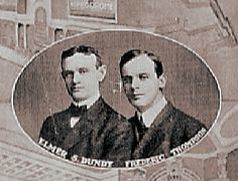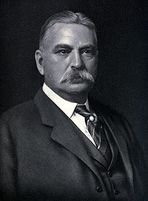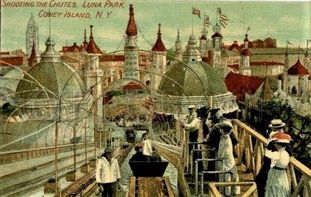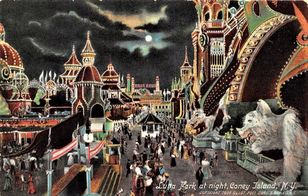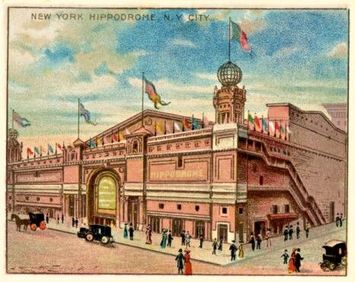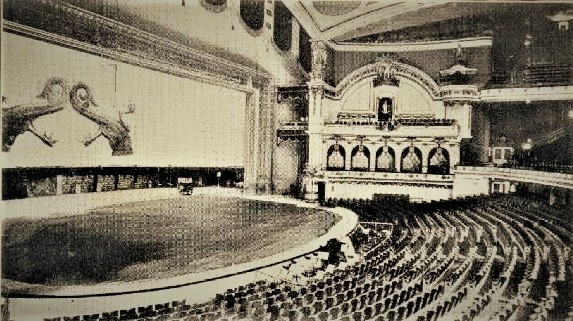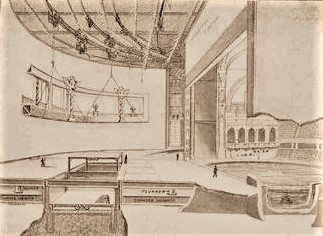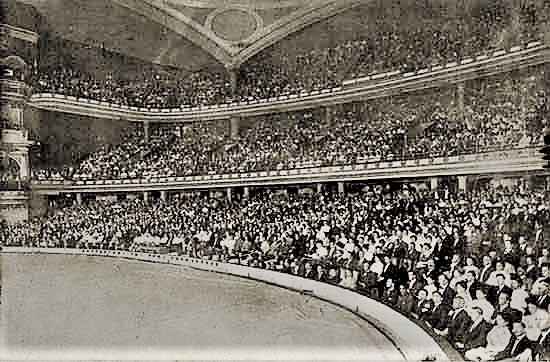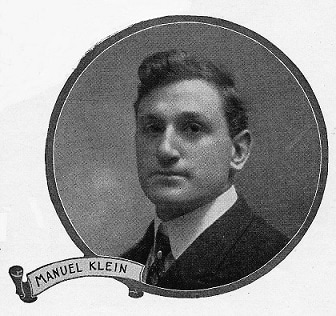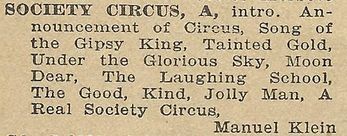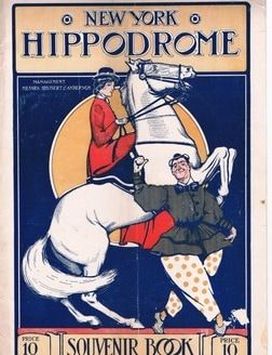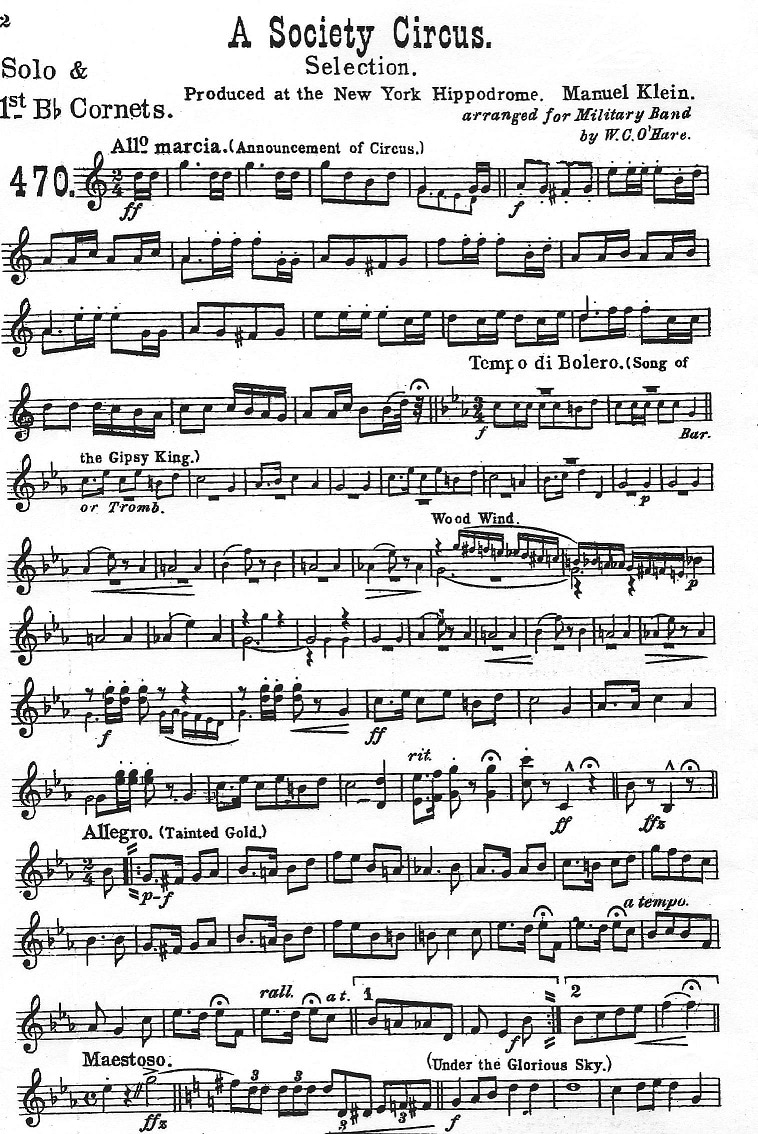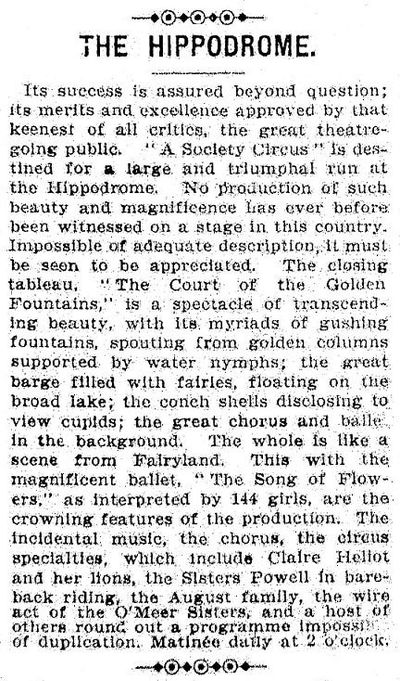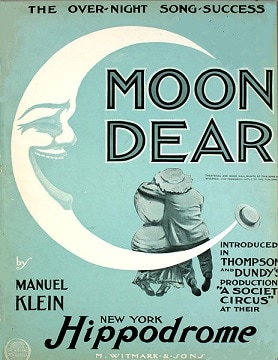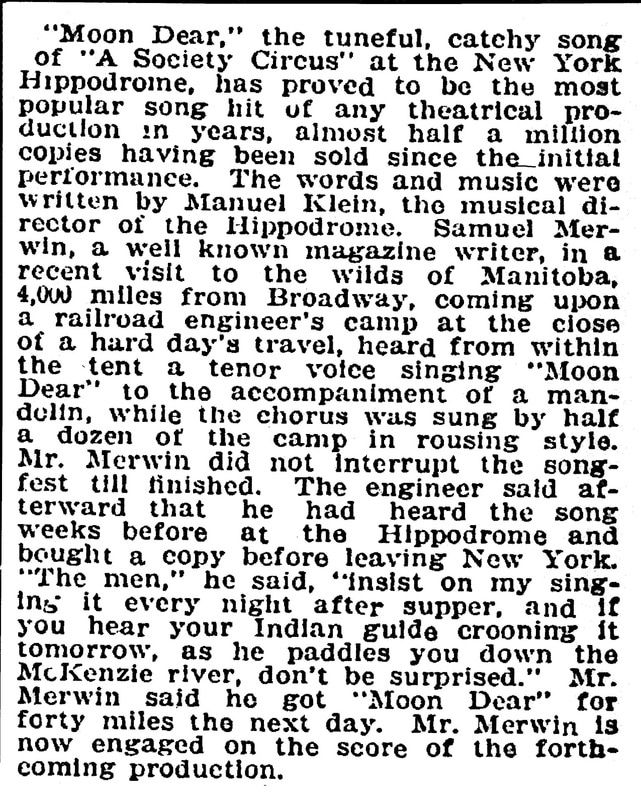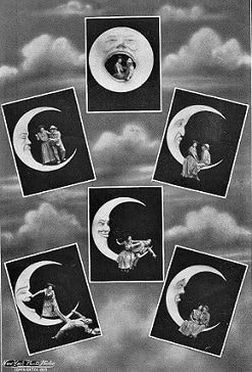A Brief History of the New York Hippodrome
Thompson & Dundy, Founders
|
Frederick Thompson and Elmer "Skip" Dundy had attracted the masses to Coney Island's Luna Park, which had opened in 1903, and they set out to do the same by building New York's largest, most sensational theater, bankrolled by self-made industrial tycoon John Warne "Bet-a-Million" Gates.
With the Hippodrome's seating capacity of 5,200, stage capacity of 1,000, and low prices, Skip Dundy labeled it a "gigantic toy." He planned to profit from the affordable theater's ability to entice the overworked, entertainment-starved masses much like recently developed department stores had enabled the middle class to shop alongside the wealthy. |
|
The Hippodrome would offer spectacle the likes of which hadn't been seen--a mixture of vaudeville, musical comedy, drama, circus, ballet, pantomime, equestrian and aquatic acts, bright lights, and technological innovations guaranteed to dazzle and delight.
The massive new theater opened in 1905 with a cast of 1,200 in A Yankee Circus on Mars. From the start, the Hippodrome was a phenomenal success, drawing in 14,000 people per day during its first year. The opening production surprised the audience "slap-bang out of its ordinary theatre-going mood," wrote Lindsay Dennison for the March 5, 1905 issue of Collier's. |
Inside the Hippodrome
|
Hydraulic lifts could raise and lower the 200 by 120-foot Hippodrome stage, which could hold a dozen elephants, a moving wagon train, or an army or Indian tribe, including 40 horses.
The 48 by 92-foot apron extending 60 feet into the theater could accommodate two full-sized circus rings and was used for the Hippodrome's famous water features. Water pumps and a tank below the apron could create fountains and waterfalls. By fully submerging the apron inside the 110 x160-foot tank, the Hippodrome could dramatize ocean storms, battles at sea, and naval pageants or could astound audiences with diving horses, disappearing mermaids, and underwater ballets. The curtain measured 85 x 212 feet, compared to average theater curtain dimensions of 24 x 35 feet. According to Collier's, the Hippodrome curtain was made of "the largest expanse of fiber ever woven." A series of overhead cranes could easily move scenery weighing up to 10 tons. "A fairyland of wonders" and "a place of magnificent distances" were phrases used to describe this unparalleled theater. |
Manuel Klein, Music Director
|
Manuel Klein served as the New York Hippodrome's music director from its opening until 1913. He was one of four British-born brothers who made their names in the music and/or theater world, the others being actor and singer Alfred Klein, music critic and singing teacher Herman Klein, and playwright-librettist Charles Klein, who died aboard the torpedoed Lusitania along with producer Charles Frohman.
M. Witmark & Sons landed the publishing rights for Hippodrome music, including sheet music, band and orchestra arrangements of individual songs, and medley piano and concert/dance ensemble arrangements. Recordings and piano rolls allowed the public to bring Hippodrome music into their homes. |
O'Hare's Work on Hippodrome Tunes
William Christopher O'Hare worked closely with Manuel Klein, a fellow Witmark composer, on Hippodrome and non-Hippodrome shows, arranging Klein's tunes for orchestra and band and combining them into medleys for which O'Hare became so well known.
Newspapers and trade journals across the country reported the latest Hippodrome events. Due to the theater's popularity, the show tunes were played not only in New York, but also anywhere that listeners enjoyed being a small part of the cultural phenomenon that was the New York Hippodrome.
One has to wonder if the performance of O'Hare's orchestrations at other venues gave even the Hippodrome theater-goers a chance to better hear Klein's music that would have been at least partially lost in the Hippodrome's enormity and amid its spectacle.
Newspapers and trade journals across the country reported the latest Hippodrome events. Due to the theater's popularity, the show tunes were played not only in New York, but also anywhere that listeners enjoyed being a small part of the cultural phenomenon that was the New York Hippodrome.
One has to wonder if the performance of O'Hare's orchestrations at other venues gave even the Hippodrome theater-goers a chance to better hear Klein's music that would have been at least partially lost in the Hippodrome's enormity and amid its spectacle.
A Society Circus (1905)
|
Writing of the Hippodrome's new production, one critic remarked:
It is an epoch-making kaleidoscope of color, beauty, dancing and song, with imposing features never before conceived in the brain of a dramatic field marshal. Thompson & Dundy have established a standard of excellence that will probably never be equaled, much less surpassed. 'The Greatest Show on Earth,' as I knew it in the past, was, in comparison to A Society Circus, merely a feeble, flickering flame that sputtered and died out without a struggle. No New Yorker nor any visitor to New York can permit himself to miss a visit to the Hippodrome. The fantasy story, replete with villains and nobles, centered on a caravan of gypsies camped on the property of wealthy Lady Volumnia.
|
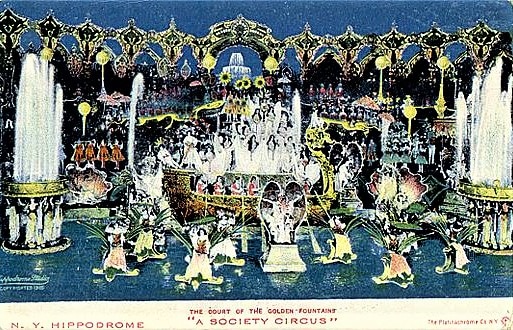
Postcard scene from the show's climax, "The Court of Golden Fountains." Changing colored lights were said to have illuminated the cascading water, swans to have glided throughout the apron's tank, and "perfume laden zephyrs" to have "wafted toward the audience." With Klein's accompanying music, the scene captivated the audience's senses of sight, sound, and smell.
When The Society Circus didn't prove as successful as anticipated, thus jeopardizing "Bet-a-Million" Gates' return on his investment, the Shubert brothers replaced Thompson and Dundy as managers.
Background image, top of page: Exterior view of New York Hippodrome
